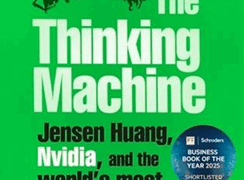
A public administrator, constitutional analyst, and development thinker, Mokshagundam Visvesvaraya, (1861–1962) was arguably the most famous Indian engineer of the twentieth century. To commemorate his birth anniversary on 15th September, which is also celebrated as Engineer’s Day, Penguin announces the release of his biography, Engineering a Nation, written by Aparajith Ramnath. It will hit the stands across the country and will be available on online platforms across the country.
India bears a significant imprint of Visvesvaraya’s work—as Sugarcane farmers in Maharashtra and Karnataka, picknickers in the Brindavan Gardens alongside the Krishnarajasagara dam near Mysore, and city dwellers across the country who enjoy a piped water supply are all partaking of Visvesvaraya’s legacy. So are students in Bengaluru’s Indian Institute of Science and Mumbai’s Institute of Chemical Technology, consumers who swear by Mysore Sandal Soap, and anyone who has lived through Independent India’s Five-Year Plans.
In Engineering a Nation, Aparajith delves into a wide range of sources to paint a balanced picture of a man who has come to be regarded as a national icon. Throughout, he explores the professional and intellectual relationships that shaped Visvesvaraya, and highlights the historical context in which he worked. To explore Visvesvaraya’s life, the book argues, is to understand the emergence of the Indian nation itself.
Visvesvaraya was an early proponent of economic planning and rapid, large-scale industrialization, which he believed were essential for national development. Most of all, he was an ardent technocrat: a believer in the power of science and technology to solve society’s most pressing problems. In his time, his ideas were both lauded and criticised. Technocratic visions are once more at the centre of public discourse today: as in Visvesvaraya’s day, they hold much promise, but also have important limitations.
It emphasizes on Visvesvaraya’s close interaction with nationalist politicians. For instance, in the 1920s, he worked closely with Madan Mohan Malaviya and M.R. Jayakar to press the colonial government for a round table conference. He was also a key campaigner for India to receive what was known as “dominion status”, and even outlined a dominion constitution for India. It brings to light some of the key debates and conflicts he participated in during and after his years as Mysore’s Chief Engineer and Dewan, illustrating the fact that his projects and policies did not sail through unopposed.
About The Author:
Aparajith Ramnath is a historian of science, technology and business. He is the author of The Birth of an Indian Profession: Engineers, Industry, and the State, 1900–47 (Oxford University Press, 2017), and has also written for Scroll, Wire, The Hindu and FiftyTwo.in. Aparajith was trained as an electrical engineer at BITS Pilani, and as a historian of science and technology at Oxford University and Imperial College London. He has been an International Scholar of the Society for the History of Technology, a Charles Wallace India Trust grant awardee, a Sangam House Writing Fellow, and a recipient of the Young Historian of Science Award (2018) from the Indian National Science Academy. In addition to Chennai, London and Kozhikode, he has lived in Pune and Bengaluru, two cities that were central to the life of M. Visvesvaraya. Aparajith teaches at Ahmedabad University, where he is associate professor in the School of Arts and Sciences.
[the_ad id=”55723″]


















